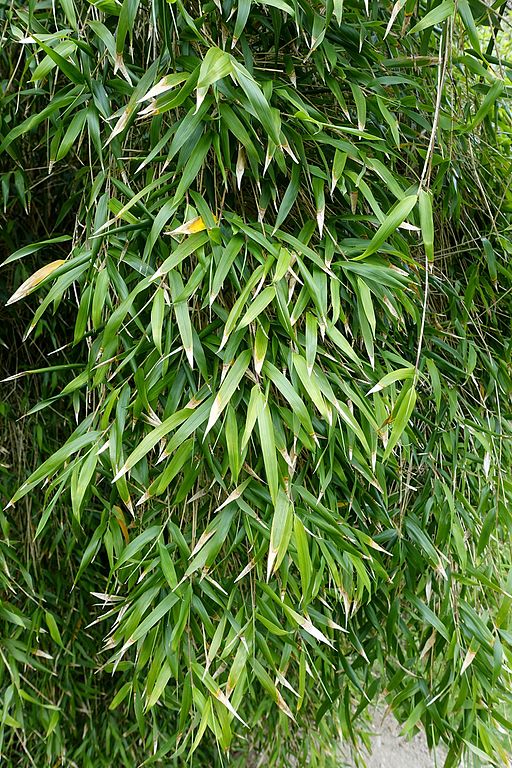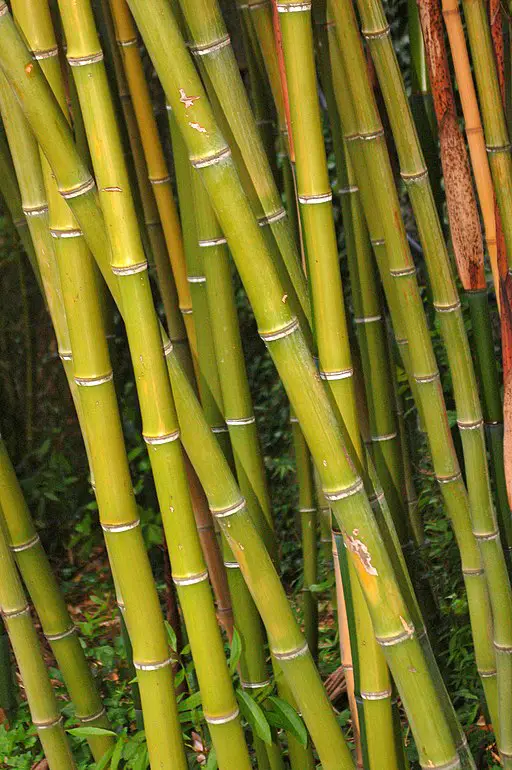Are you interested in growing bamboo in Maine but unsure if it’s possible? With its cold winters and short growing season, Maine may not seem like an ideal location for bamboo. However, with the right variety selection and proper care, you can successfully grow this versatile plant in your backyard.
Maine has a humid continental climate with long, cold winters and short summers. This means that while some varieties of bamboo may struggle to survive in the state’s harsh conditions, others are well-suited to the climate.
In this article, we will explore the factors that contribute to successful bamboo growth in Maine, including selecting the right variety based on hardiness zone and providing protection from wind damage. We will also cover important tips for caring for your bamboo plants so you can enjoy their beauty and benefits all year round.
Understanding Maine’s Climate and Growing Conditions
Before you start planting, it’s important to understand the unique climate and growing conditions of this northeastern state.
While Maine is known for its cold winters and short growing season, there are still opportunities for bamboo cultivation. In fact, some areas of Maine have a climate that is well-suited for certain types of bamboo.
Maine’s bamboo potential largely depends on where you are located within the state. Coastal regions tend to have milder winters and longer growing seasons, making them more conducive to bamboo growth. Additionally, areas with well-draining soil and plenty of sunlight are ideal for cultivating this plant.

If you want to grow bamboo in Maine, it’s important to choose the right species for your location. Some of the best options include hardy clumping bamboos like Fargesia rufa or Fargesia nitida. These varieties can withstand cold temperatures and thrive in shady conditions. Other good choices include Phyllostachys aureosulcata (yellow groove), which grows quickly and produces beautiful golden stems, or Phyllostachys bissetii, which is particularly hardy and resistant to pests and diseases.
Overall, while Maine doesn’t have the easiest climate for bamboo cultivation, it’s still possible with careful consideration of your location and choice of species. By selecting a variety that can withstand cold temperatures and thrive in shade or partial sun, you may be able to successfully grow this versatile plant in your own backyard.
Choosing the Right Variety of Bamboo
When choosing a variety of bamboo to grow in Maine, consider its growth habit as well. Clumping bamboos tend to be easier to manage since they spread less aggressively than running bamboos.
On the other hand, running bamboos have root systems that can spread quickly through underground rhizomes. If left uncontrolled, they can easily take over gardens and landscapes. For this reason, we generally only recommend selecting clumping bamboos for your garden.
To ensure successful cultivation of bamboo in Maine, it’s important to follow proper bamboo cultivation techniques and provide suitable soil requirements. Bamboo prefers slightly acidic soils with a pH range between 5.5-6.5. Soil should be loose and well-draining with good water retention capacity.
Adding organic matter such as compost or peat moss can help improve soil structure and fertility. Additionally, regular watering during dry spells is necessary for healthy growth and development of your bamboo plants.
Protecting Your Bamboo from Wind Damage
One thing to keep in mind when cultivating bamboo is how to protect it from wind damage, especially if you live in an area prone to strong gusts. Wind can cause the bamboo to bend or break, which can be detrimental to its growth and overall health.
Luckily, there are ways to reduce the risk of wind damage. Firstly, you could choose a wind-resistant species of bamboo. Some species are naturally more resistant to wind than others. For example, Phyllostachys aureosulcata ‘Spectabilis’ and Fargesia robusta are both known for their ability to withstand windy conditions. By selecting a species that is better suited for your climate and environment, you can help prevent damage caused by strong winds.



In addition, using bamboo stakes can provide extra support for your plants. The stakes should be placed on either side of the plant and secured firmly into the ground with wire or twine. This will help keep the plant upright during periods of high winds.
It’s important to regularly check the stakes for any signs of damage or weakness so that they remain effective at protecting your bamboo from potential harm caused by wind.
Providing Proper Care and Maintenance
Now that you know how to protect your bamboo from wind damage, it’s time to start giving it the proper care and maintenance it deserves so that it can thrive in your garden.
Bamboo is a low-maintenance plant, but like any other plant, it needs some care and attention to grow healthy and strong to its full potential. Here are three tips on how to provide the best care for your bamboo:
- Watering frequency: Bamboo needs regular watering, especially during hot and dry weather conditions. It’s important to keep the soil around the bamboo moist but not waterlogged. Overwatering can lead to root rot, which can be fatal for the plant. A good rule of thumb is to water your bamboo deeply once or twice a week depending on the weather conditions.
- Soil quality: The soil quality plays a crucial role in the growth of bamboo plants. The ideal soil pH level for growing bamboo is between 6 and 7.5 pH levels. Adding organic matter such as compost or peat moss can improve soil quality by increasing its ability to hold moisture and nutrients.
- Fertilization: Bamboo plants require regular fertilization with nitrogen-rich fertilizer every six weeks during their active growing season (spring through fall). This will help promote healthy growth and encourage lush foliage development.
With these tips in mind, you can give your bamboo plant the best chance to thrive in your garden.
Remember always; prevention is better than cure – Keep an eye out for signs of stress or disease such as yellow leaves or wilting stems, and act quickly before they become major issues!
Enjoying the Benefits of Growing Bamboo in Maine
Bamboo is an incredibly versatile plant that can be used for a variety of decorative purposes. Its unique texture and appearance make it an excellent material for crafting furniture, flooring, and even clothing. Additionally, bamboo’s sustainability makes it a popular choice among environmentally-conscious consumers.
One of the most significant advantages of growing bamboo in Maine is its sustainability. Bamboo is one of the fastest-growing plants on earth and can grow up to 91 cm per day under ideal conditions. This rapid growth rate means that bamboo can be harvested frequently without depleting natural resources or damaging the environment. Moreover, once established, bamboo requires minimal water and fertilizer compared to other crops.



Bamboo’s decorative uses are also worth noting when considering cultivating this plant in Maine. The unique texture and appearance of bamboo make it an excellent material for crafting various items such as furniture pieces or home decor accents like vases or picture frames. Furthermore, because bamboo comes in different shades ranging from light yellow to dark brown, it offers versatility in design options that complement any interior style perfectly.
Whether you’re looking to add some rustic charm or modern elegance to your space, there’s a type of bamboo that will suit your needs perfectly!
Some Varieties Worth Considering
| Scientific Name | Common Name | Description |
|---|---|---|
| Fargesia robusta | Clumping Bamboo | A cold-tolerant bamboo variety that forms dense clumps and works well as a privacy hedge or container plant. |
| Fargesia murielae | Umbrella Bamboo | An attractive and non-invasive bamboo with delicate foliage that provides excellent shade and privacy. |
| Phyllostachys aurea | Golden Bamboo | A versatile bamboo species with golden culms, commonly used for landscaping, privacy screens, and crafts. |
| Phyllostachys bambusoides | Japanese Timber Bamboo | A tall and robust bamboo species with thick culms, suitable for construction and creating a natural barrier. |
| Pleioblastus distichus | Dwarf Whitestripe Bamboo | A compact bamboo with distinctive white-striped culms, ideal for groundcover or container planting. |
| Pleioblastus fortunei | Dwarf Fernleaf Bamboo | A low-maintenance bamboo with feathery foliage, perfect for adding a touch of elegance to small garden spaces. |
| Sasa palmata | Broadleaf Bamboo | A shade-tolerant bamboo species with large, broad leaves, suitable for creating a lush and tropical garden setting. |
| Semiarundinaria fastuosa | Narihira Bamboo | An ornamental bamboo known for its zigzag-shaped culms and delicate foliage, adding visual interest to landscapes. |
| Shibataea kumasaca | Kamuro-zasa Bamboo | A dwarf bamboo with dense clumps and narrow, arching leaves, ideal for groundcover or rock gardens. |
| Yushania anceps | Himalayan Weeping Bamboo | A graceful bamboo with weeping culms and dense foliage, creating a serene and tranquil atmosphere in the garden. |
Frequently Asked Questions
What are the best soil conditions for growing bamboo in Maine?
For optimal growth of bamboo in Maine, soil pH levels should be between 5.5-6.5 and drainage must be well-maintained. Different varieties of bamboo have varying soil requirements, so research is necessary for successful cultivation.
Can bamboo thrive in a shaded area or does it need direct sunlight?
Bamboo varieties suitable for Maine thrive in partially shaded areas, but direct sunlight is preferred. Some species can tolerate shade and still grow well, but it’s important to select the right type of bamboo for optimal growth in shaded conditions.
How long does it take for bamboo to mature and start producing new shoots?
Bamboo can take anywhere from 3-5 years to mature and start producing new shoots. Growing timeline may vary depending on species, climate, and soil conditions. Pruning techniques are important for maintaining healthy growth. Harvesting methods can be used to produce bamboo products.
Is it necessary to fertilize bamboo regularly, and if so, what type of fertilizer should be used?
To promote optimum growth, bamboo should be fertilized with a balanced organic or synthetic fertilizer every 4-6 weeks during the growing season. Organic options include compost and manure, while synthetic options include slow-release granules with nitrogen, phosphorus, and potassium.
What are some common pests or diseases that can affect bamboo in Maine, and how can they be prevented or treated?
To prevent pests and diseases on your bamboo, practice good bamboo pest management by keeping the area clean and removing dead or infected leaves. Prune regularly to improve air circulation and avoid overwatering to prevent root rot.
Conclusion
Congratulations! You now have the knowledge and tools to successfully grow bamboo in Maine.
With an understanding of Maine’s climate and growing conditions, you can select the right variety of bamboo that will thrive in your specific area.
Protecting your bamboo from wind damage is crucial, so be sure to provide proper support and shelter.
Proper care and maintenance are also essential for healthy bamboo growth. This includes regular watering, fertilization, and pruning as needed.
With diligence and patience, you can enjoy the benefits of growing bamboo in Maine such as erosion control, privacy screening, and a unique addition to your landscape.
Happy planting!

